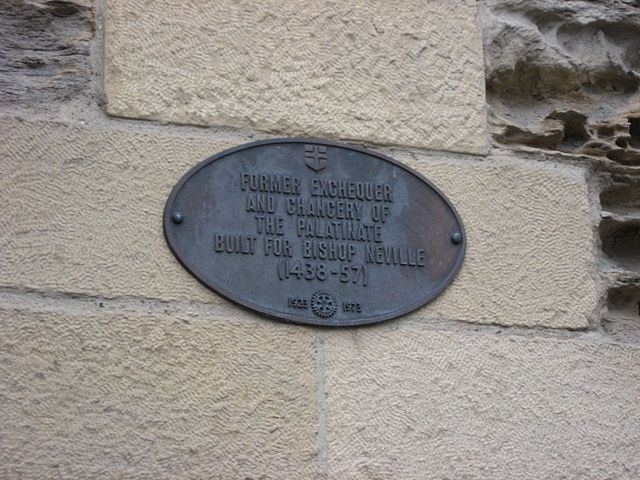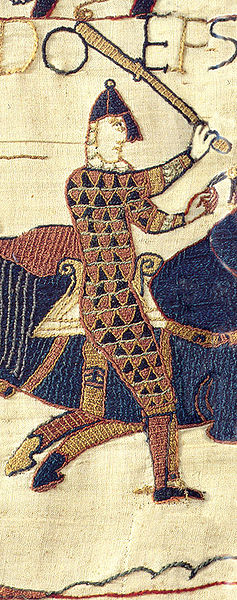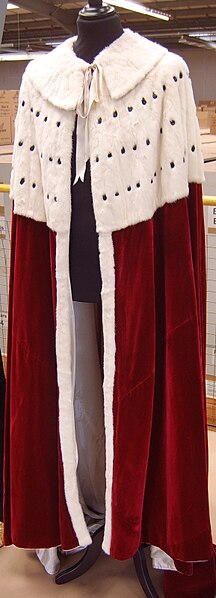In England, Wales and Ireland a county palatine or palatinate was an area ruled by a hereditary nobleman enjoying special authority and autonomy from the rest of a kingdom. The name derives from the Latin adjective palātīnus, "relating to the palace", from the noun palātium, "palace". It thus implies the exercise of a quasi-royal prerogative within a county, that is to say, a jurisdiction ruled by an earl, the English equivalent of a count. A duchy palatine is similar but is ruled over by a duke, a nobleman of higher precedence than an earl or count.
Durham palatinate plaque.
Earl is a rank of the nobility in the United Kingdom. In modern Britain, an earl is a member of the peerage, ranking below a marquess and above a viscount. A feminine form of earl never developed; instead, countess is used.
Odo of Bayeux, fighting in the Battle of Hastings as shown in the Bayeux Tapestry. Odo was later made Earl of Kent.
Hedingham Castle, seat of the Earls of Oxford, is in Essex where most of the earl's land was concentrated
The royal procession to the Parliament of England at Westminster on 4 February 1512. Left to right: The Marquess of Dorset (second from left), Earl of Northumberland, Earl of Surrey, Earl of Shrewsbury, Earl of Essex, Earl of Kent, Earl of Derby, Earl of Wiltshire. From Parliament Procession Roll of 1512.
Earl's coronation robes





